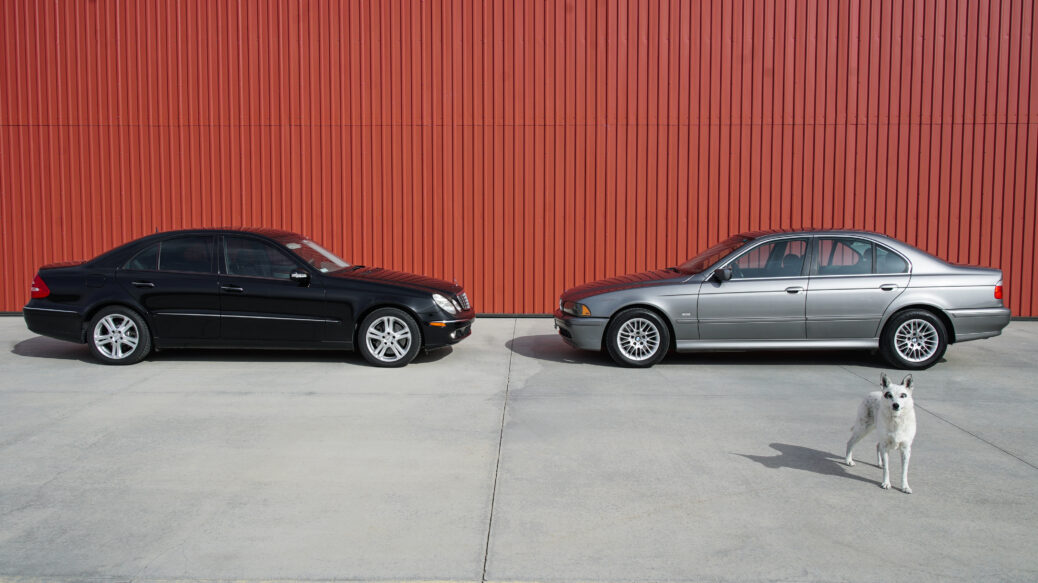A random duo of cars showed up at my doorstep last month, a 2003 BMW 530i and a 2004 Mercedes-Benz E500 4Matic. Both were driver-quality examples of full-size German sports sedans; they were one model year apart, and on the open market, both would sell at a similar price point: $12,500. That, however, is where the similarities ended.

The Mercedes-Benz W211 E500 and BMW E39 530i are from different generations, but still make a compelling comparison.
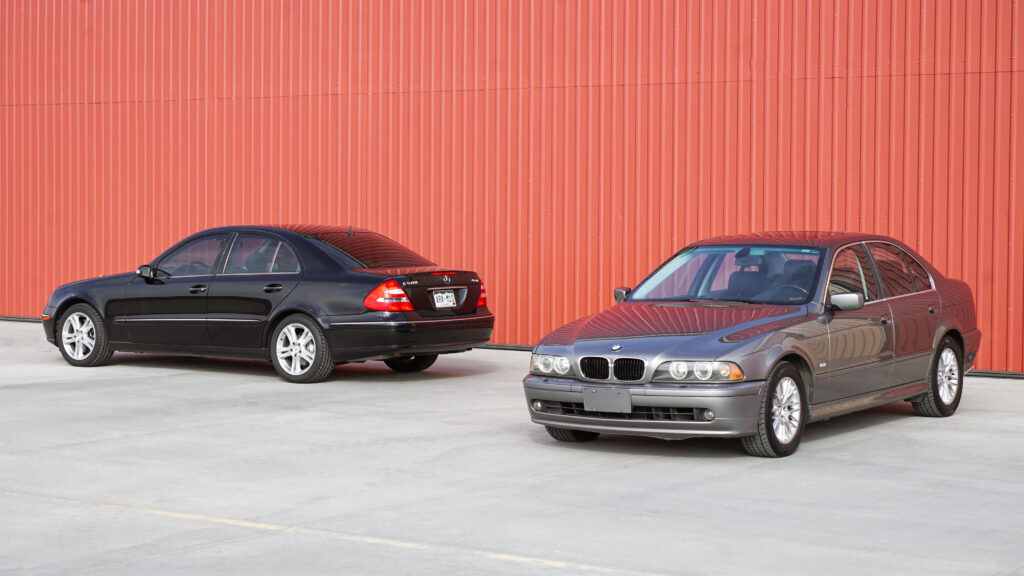
The E500 is more modern, but the 530i has an understated elegance.
The 2003 model year was the last year of the E39-generation BMW 5 Series, while 2004 was the second year of the W211-generation Mercedes-Benz E Class. The BMW 530i was powered by the six-cylinder 228-horsepower M54B30 engine, had a proper manual gearbox, and was rear-wheel drive. The Mercedes-Benz E500 had a 5.0-liter 302-horsepower V8, an automatic gearbox, and 4Matic all-wheel drive. The 530i proudly wore 138,000 miles, while the E500 had only 46,000 miles. Based on engine size, a V8-powered E39 540i would have been the more appropriate car to compare with the E500, while the E60-generation 5 Series, with similar amenities and optional all-wheel drive, would be the E500’s contemporary. But, the differences with the E39 530i make it a great comparison point. The E60-generation 5 Series marked the end of an era, and with it, we saw the last-of-the-classics E39 design give way to the Bangle-butt years. The six-cylinder 530i is also cheaper to maintain than the 540i, suffering none of the timing chain tensioner issues or costly V8 maintenance.
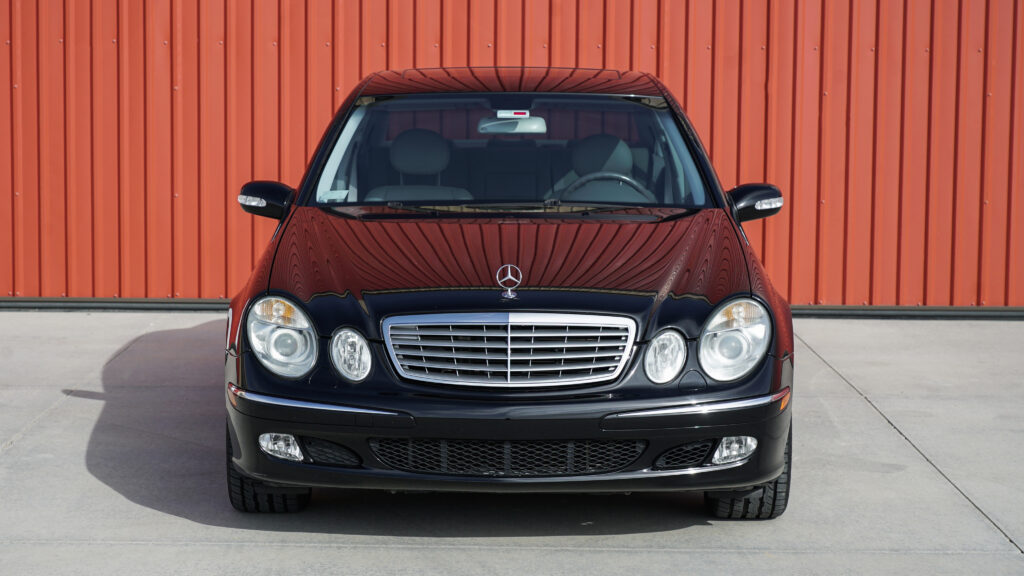
The W211 E500 looks fantastic head-on.

Although, the window trim/belt-line intersection is open-ended comported to the 530i’s Hofmeister kink.

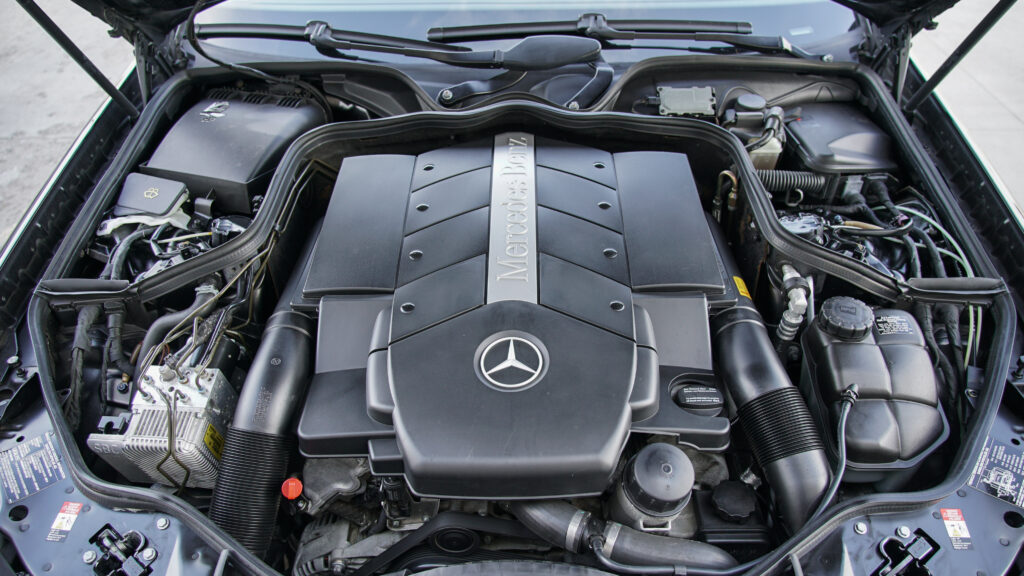
The E500’s power comes from a 5.0-liter V8.
At first glance, the E500 is by far the nicer car. The W211 design reigned for the majority of the 2000s, and twenty years on, it has aged wonderfully. My only real visual complaint is the open-ended swooping arc scribed by the window trim where it meets the belt line at the C-pillar. The V8 is buttery smooth, delivering 339 pound-feet of seamless torque. In fact, it’s almost too seamless (read: boring), as a 5.0-liter V8 should feel faster than it does in the E500. That said, luxury is the primary mission of the E500, and a formidable list of accoutrements makes no mistake of that.
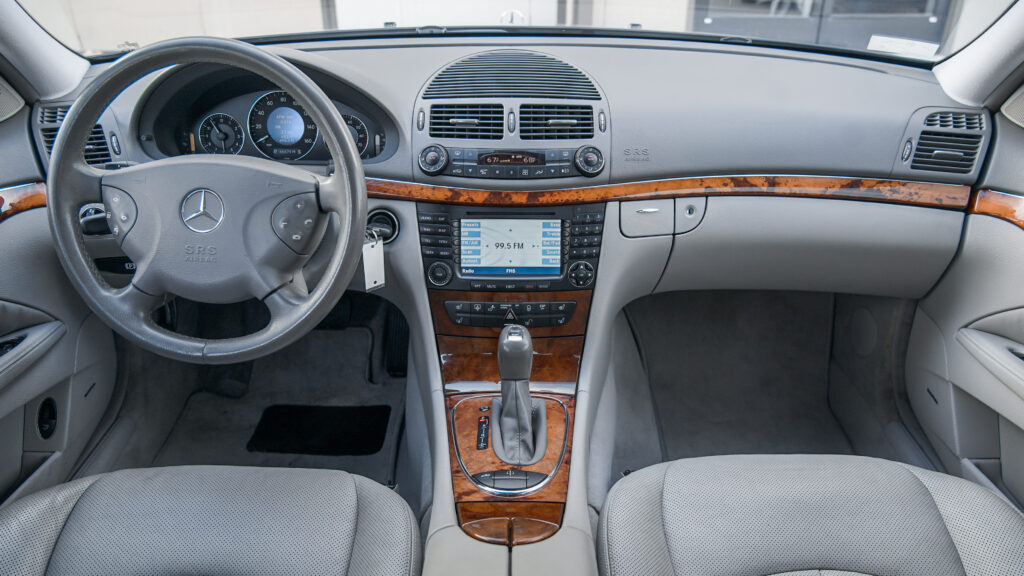
The interior of the E500 was superb.
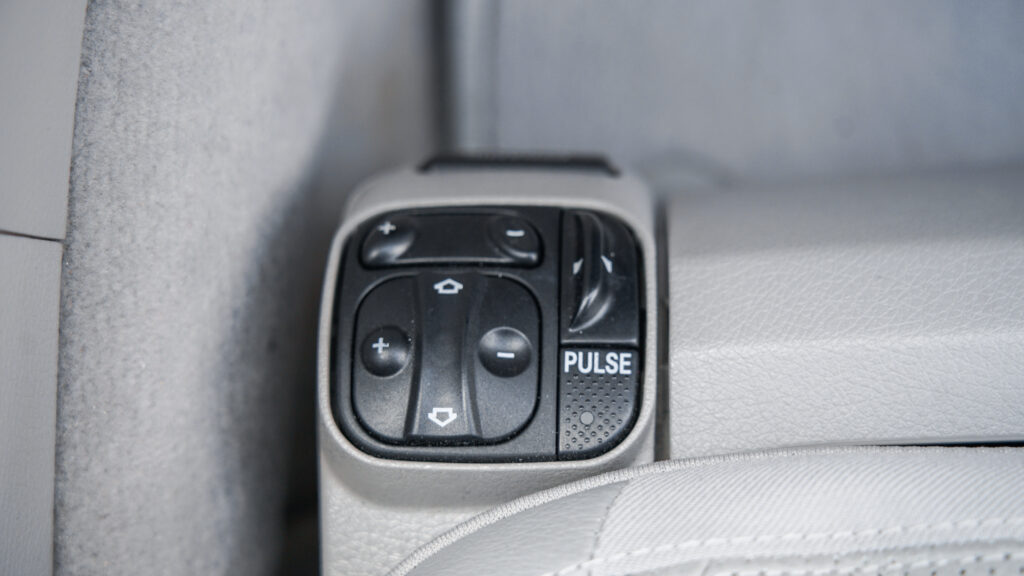
Which was made even better by massaging seats.
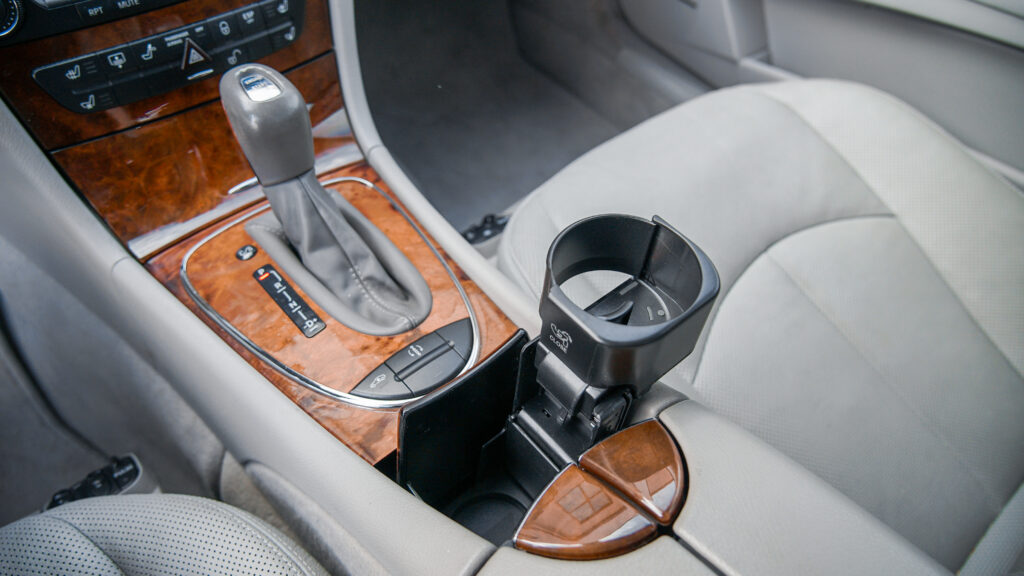
Compared to the 530i’s afterthought cupholder, the E500’s was an engineering marvel.
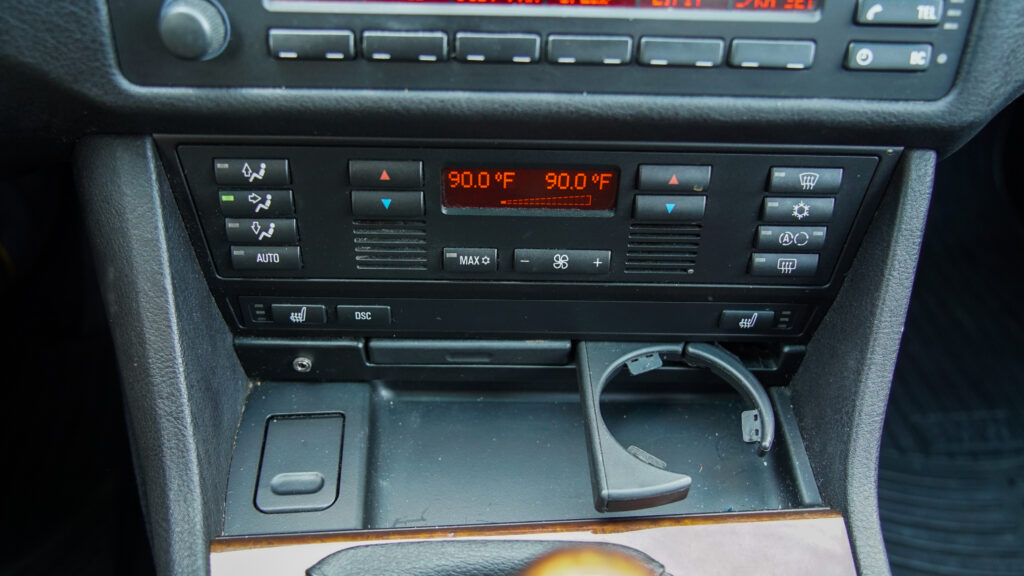
The Ash leather and Burl wood trim are decidedly higher quality than those found in the cockpit of the BMW and add a distinct air of opulence to the Mercedes. The seats are not only heated and ventilated, but also massaging with active side bolsters that would pinch your love handles during hard cornering—if they worked (the ones in my E500 did not). With the push of a button, the cupholder transforms out of the center console. It will actually hold your coffee, compared to the E39’s, which was nothing more than BMW’s thinly veiled attempt to reinforce the notion that we should not be consuming beverages while driving. An adjustable air suspension provides impressive cornering without compromise, ensuring not even a ripple in that coffee over the minefields that we call roads in Colorado. Unfortunately, it proved to be problematic; after replacing virtually all of the components, it still would bleed down after sitting for several days. This would ultimately put me upside-down on the car financially.
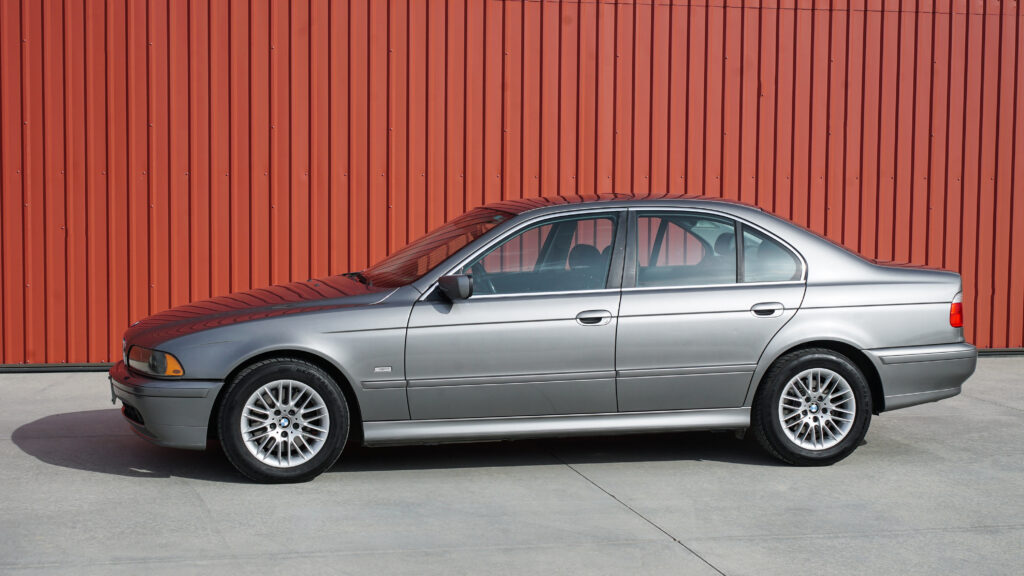
The E39 was the last 5 Series before the Bangle butt era.

The 530i’s six-cylinder engine is a fantastic block.
With nearly 100,000 more miles than the E500 and an almost a decade older design, the E39 530i was unsurprisingly dated, but that isn’t necessarily a bad thing. Where the E500 is a luxury sedan, the BMW is unapologetically a sports sedan. Add a proper manual gearbox, and that explains the strong price that the 530i sold for. Otherwise, the 530i was sparsely optioned, having no sport package or infotainment system, and fat-tired sixteen-inch wheels. What it did have was the cold weather package, and a heated steering wheel—a rare option for an E39. Where the E500 felt less powerful than it was, the 228 horses of the 530i punched above their class. Being able to row your own gears in a markedly more communicative chassis wins the driving experience for BMW. In fact, driving the 530i was an occasion, where the E500 was just a nice car.
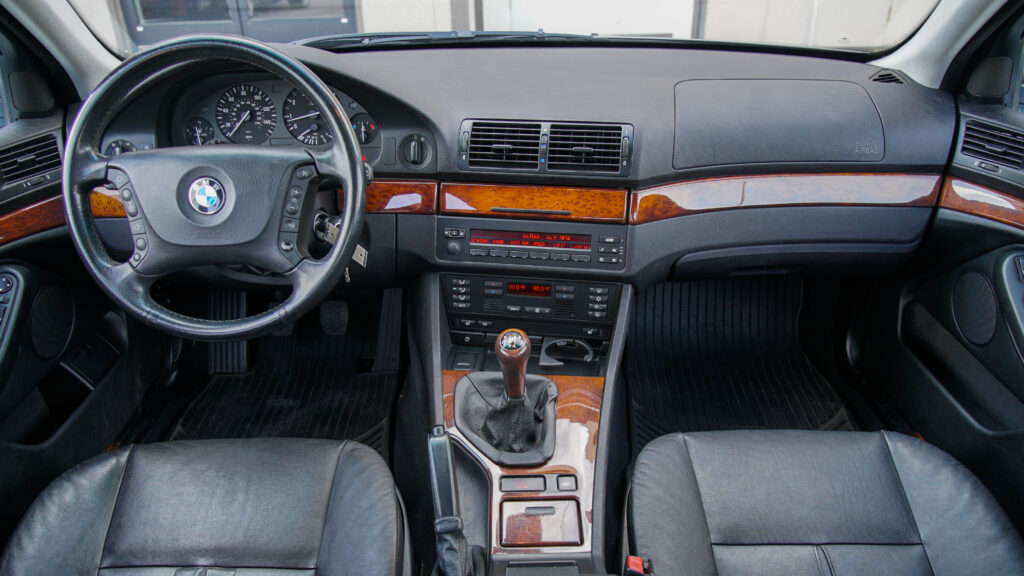
The interior of the 530i was simple and purposeful. Note the heated steering wheel.
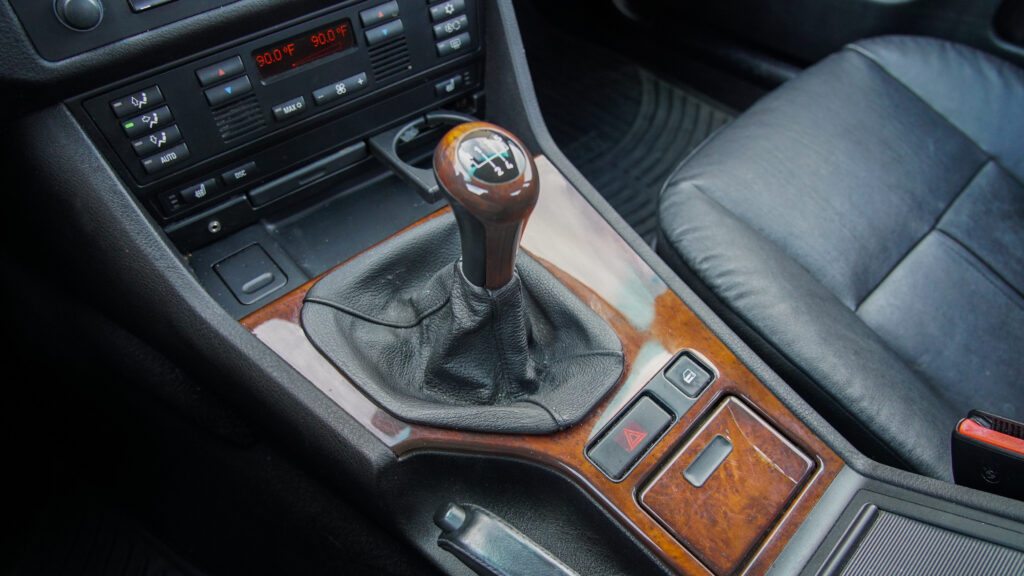
The 530i didn’t have the options hat the E500 did, but it did have one very important option—a manual gearbox.
The aesthetics of the 530i were one of BMW’s best, refined and subtle, and having the all-familiar Hofmeister Kink. The interior layout was logical and comfortable. This example wore the scars of age and use, including common E39 issues such as seat twist, where seized cables create asymmetric raising, lowering, and reclining. We repaired this before it left my hands. One of the cup holders was stuck in the extended position, which considering that they didn’t work in the first place, only made it an eye sore. Pixelated displays on the stereo and a duct tape repair on the driver’s seat added more soreness to the retinas. Still, beyond that, the 530i had an excellent maintenance pedigree with no outstanding mechanical squawks. Being the last year of E39 production, Sterling Grey over black leather, and the all-important manual gearbox put it at the same price point as the E500.

Duct tape repairs and seat cable twist didn’t help the 530i’s cause.
Even as a BMW guy, I have to admit that the Mercedes-Benz E500 is the better car of the two. But, the fact that these cars sold at the same price point is complimentary of the 530i. I consider the E39-generation 5 Series the pinnacle; before it, the 5 Series got better with each generation, and since then, it has only gotten worse (although the F90 stands out from this assertion). In doing the job of being a car, the W211 Mercedes-Benz E500 is hard to beat for the money. With under 50,000 miles on the odometer, all-wheel drive, and a luxurious interior more akin to a business jet than a car, few cars at this price point come close in value. But when I posted it slightly above my break-even number of $15,000, the phone didn’t ring. I waited patiently for several weeks without one phone call, and with the interest clock burning, I whittled down the price until the phone rang. That magic number was $12,500, which incidentally is exactly the same number that the 530i sold in less than two weeks. In the contest of the car that pulled at people’s heartstrings more, the BMW was the clear winner.—Alex McCulloch

